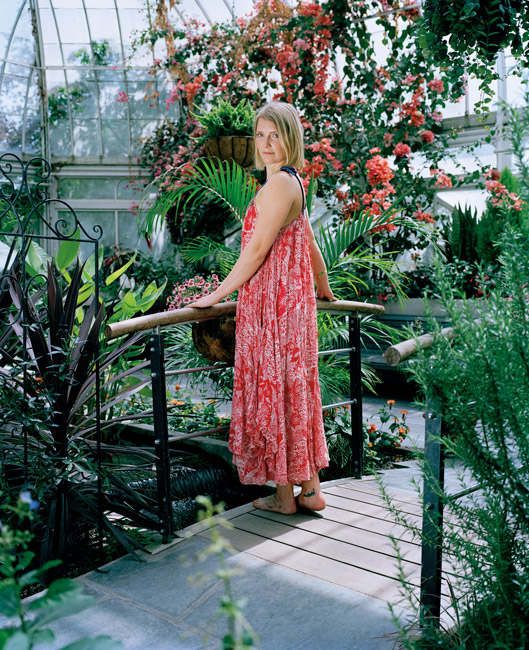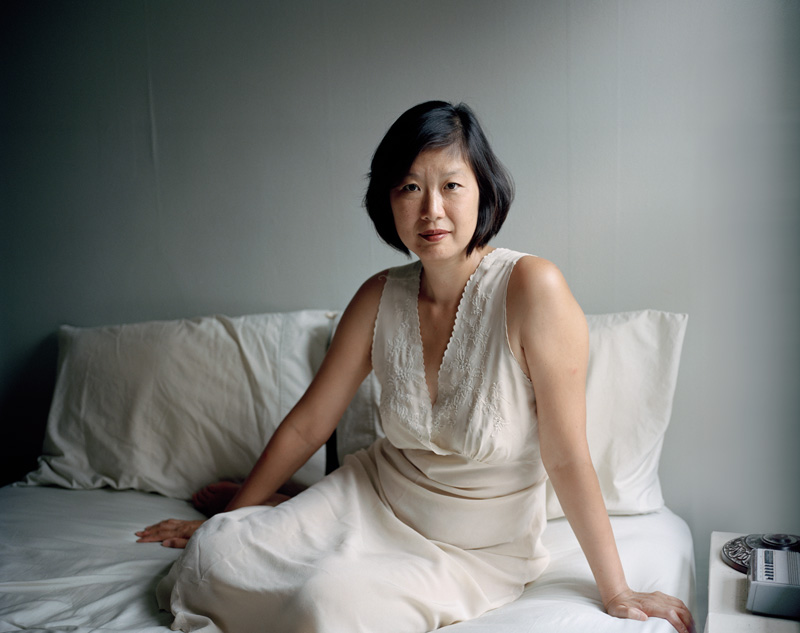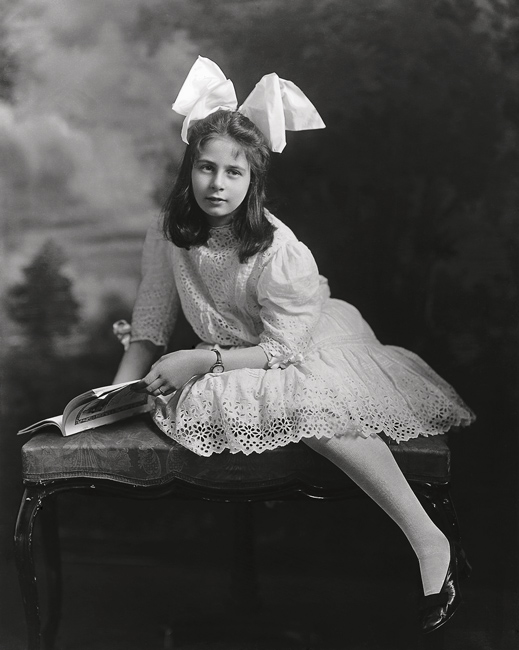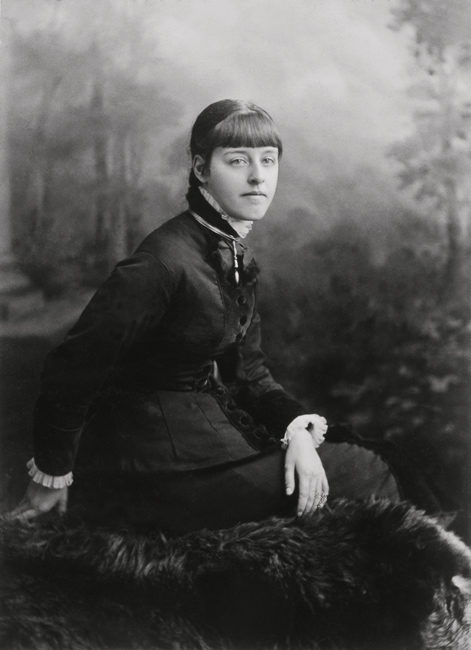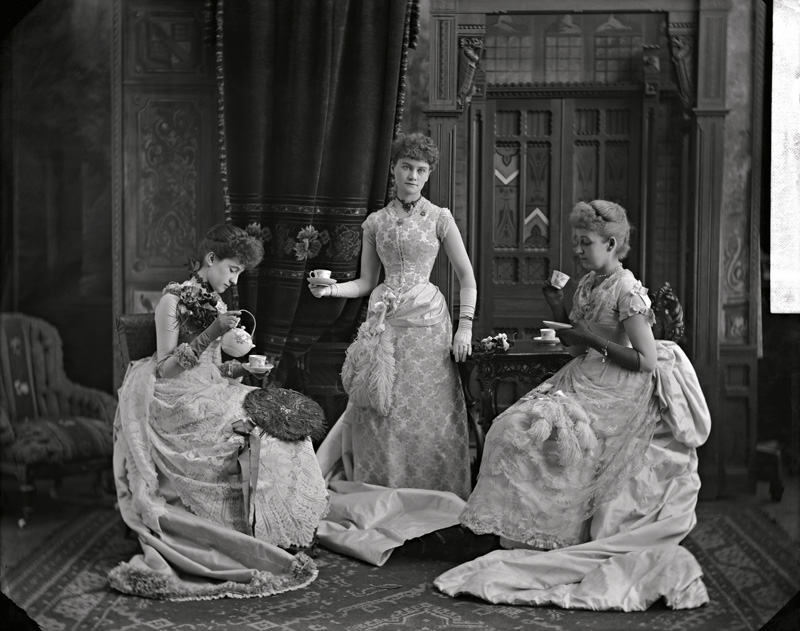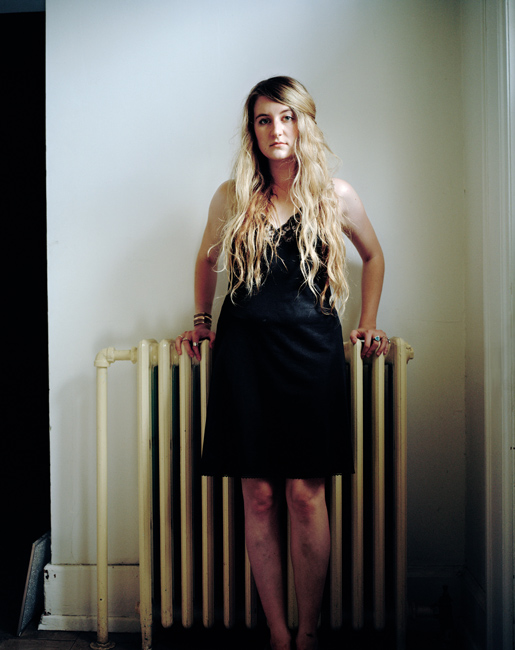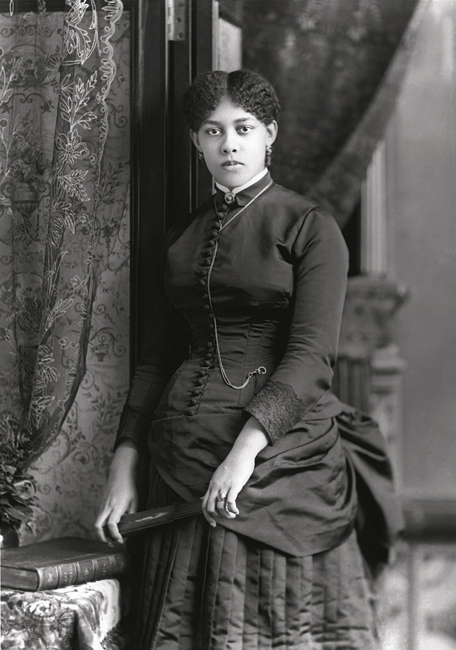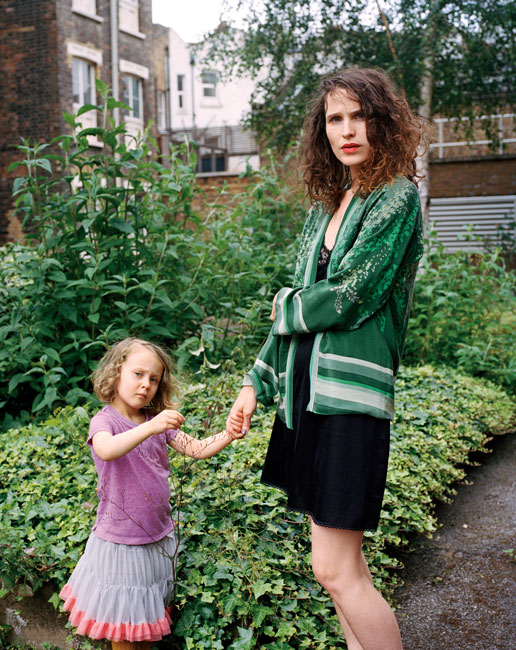By James D. Campbell
Montreal-based fine-art photographer Marisa Portolese has garnered well-deserved acclaim for the clarity and lush chromatic and emotional dimensionality of her images. The third instalment of her long-running photographic series of portraits of women and girls titled Belle de jour – recently the subject of an exhibition at Concordia’s FOFA gallery1 – marks something of a departure in its conscious dialogue with the portrait photographs of William Notman (1826–1891). The famously lionized Victorian-era Notman was Canada’s first internationally recognized photographer, acclaimed for the high quality of his portraits, composites, landscapes, and cityscapes. His portraits of the families of the ruling elite – specifically, women and young girls – have always fascinated Portolese, and she saw the logic of counterpoint and chiasmic dialogue in juxtaposing their respective bodies of work.
Before beginning the production of this new phase in her series, she spent considerable time in the McCord Museum’s voluminous Notman Photographic Archives, sifting through tens of thousands of his portraits from over a century ago. She engages in a deep and vigorous critique of Notman’s work as a contemporary radical feminist coming to terms not only with his portraits of women but with their backstory.
Loren Ruth Lerner, writing insightfully on Notman’s practice (and specifically nine of his portrait photographs of wealthy English-speaking Montreal girls), argues that the work constitutes a unique pictorial record of upper-bourgeois educational ideals pertaining to the raising of girls in the Victorian epoch and exposes the worldview of that class’s ideas where they are concerned (as pre-given in literature and hugely redolent of the views of art and social critic John Ruskin).2
The arresting collision between Notman’s commissioned portraits and the women and girls photographed by Portolese is more seamless and serene than hectic and dislocatory, but it still throws off a lot of live sparks, even if no outright hostility on her part is implied or espoused. It is no exaggeration to state that these photographers share a formal clarity and attention to detail that are both salutary and thematic. However, a sort of reverse or inverse parallelism of images obtains. And if Portolese reprises and effortlessly transcends something of what has been called the unprecedented sensuous immediacy of Notman’s portraits of women, it comes as no surprise to her followers for she has been attentive to exploring female sexuality in images with rare acumen, and undermining idealized and patriarchal visions of femininity, for many years.
Whereas Notman’s portraits, which notably do not objectify his women subjects, are soaked in (if not embalmed by) the aesthetic ideals of Ruskin, Portolese takes a more telling cue from the work of Germaine Greer – and Diane Arbus. Her work has a rare dimensional gravitas. Consummately unafraid, she challenges conventions of female representation, empowering women and exposing deeply entrenched and “timeless” standards of beauty. But instead of merely connecting the dots, as it were, she successfully explodes late-nineteenth-century conventions of portraiture by reifying the individuality of her subjects in counterpoint and giving free reign to postures and expressions that defy norms and escape the straitjacket of the earlier taxonomy.
However, it is clear that Portolese respects Notman and the innate honesty of his portraiture, even as she accepts and highlights the “always already given” presence of Ruskin’s pervasive influence in his work. Rather than impose ideals on her own subjects, she lets them run with their own singularity. This leads us to reflect on the question of who ennobles his or her subjects more. Given the unbridled contemporary spirit and unfettered expression of her subjects, and the fact that she is no craven society photographer who accepts commissions but a resolute free agent, and as wayward as need be, there is no doubt that Portolese easily wins out.
Consider Kate & Vy (2016), her remarkable portrait of fellow artist Kate Greenslade and her young daughter Vy, taken in London. Greenslade’s expression veers between a sort of startled unease and suspicion, and her young daughter’s own skeptical stare is oddly dovetailed with it, as she examines a twig with one hand and clenches her mother’s hand in the other. This is a kind of portraiture we have not seen before, and it speaks of letting the chips fall where they may and “letting being be” rather than foisting upon the mother–daughter entanglement any noisome artifice or false drama.
Emerging photographic historian and critic Zoë Tousignant ably and sensitively curated the expansive Belle de jour III corpus. The daughter of a mother who is a noted translator and a father who is a notorious Plasticien painter, she has been around art all her life, and this familiarity, together with scholarly chops and a cutting-edge sensibility, gives her an edge, as evidenced in the lively dialogue between Portolese and Notman, helping to make it at once provocative and hugely inviting, and shedding welcome light on their respective bodies of work.
Portolese’s portraits are obviously built with an almost cinematic authority and care, but her subjects are resoundingly iconoclastic and truly themselves. She gives us more than meets her eye. She catches the viewer in a web of expectations and then proceeds to unmoor their assumptive contexts, allowing for and encouraging a long second look. Over the course of this examination, her subjects, girls and women, retain their individuality, triumphing over the gaze, and the artist’s careful, never casual choreography eludes the taxonomy that makes objectification possible.
The figure of the chiasmus (Latin term from Greek χίασμα, “crossing,” from the Greek χιάζω, chiázō, “to shape like the letter X”) rules here, as the philosopher Emmanuel Levinas meant it, meaning a crossing or interlacing. Portolese’s and Notman’s lines of photographic thought meet in the heart of the chiasmus, in and beyond time, and reveal many layered points of convergence and divergence. Still, at least in the history of photography, what might have been and what has been point to one end, which is always present. Indeed, as the poet said, the time of Portolese’s images is eternally present. Here is the truth of seeing rooted in the timeless essence of ethical dialogue.
2 Loren Lerner, “William Notman’s Portrait Photographs of the Wealthy English-speaking Girls of Montreal: Representations of Informal Female Education in Relation to John Ruskin’s ‘Of Queens’ Gardens’ and Writings by and for Canadians from the 1850s to 1890s,” Historical Studies in Education 21, no. 2 (2009): 65–87.
Marisa Portolese was born in Montreal, Quebec. She is an associate professor in the photography program at Concordia University. Portraiture, representations of women, autobiography, and the figure in the landscape are major and recurrent themes within her photographic work. Since earning an MFA from Concordia University in 2001, she has produced many projects, which have received critical acclaim. She has travelled and exhibited widely in Canada, Europe, and the United States. She has also published two monographs: Un Chevreuil à la Fenêtre de ma Chambre (2003) and Antonia’s Garden (2012). She is represented by Gallery Lilian Rodriguez.
marisaportolese.com
James D. Campbell is an author and curator who writes frequently on photography and painting from his base in Montreal.




